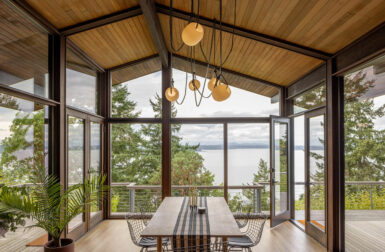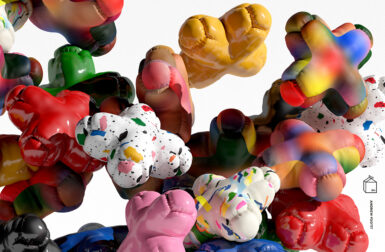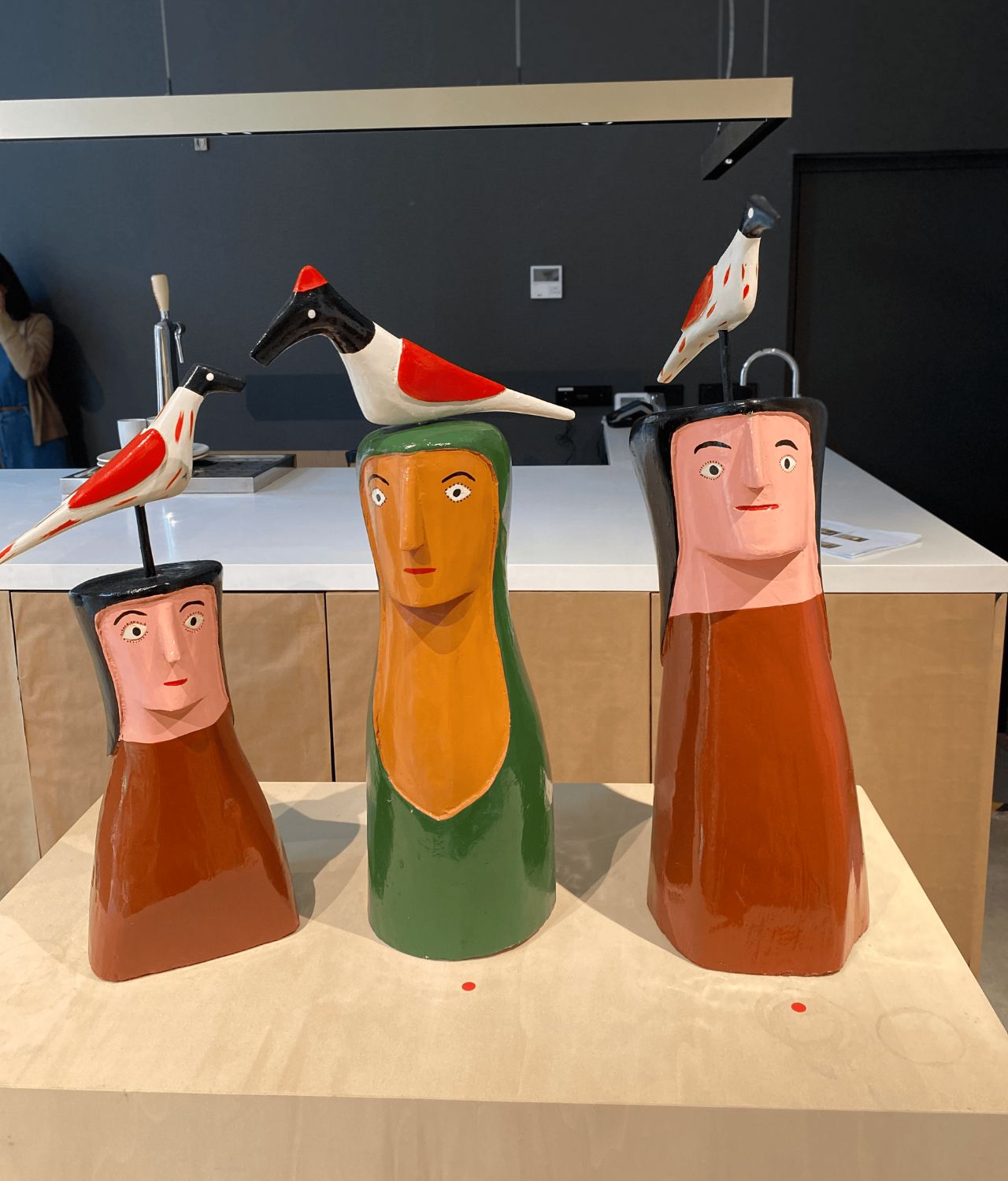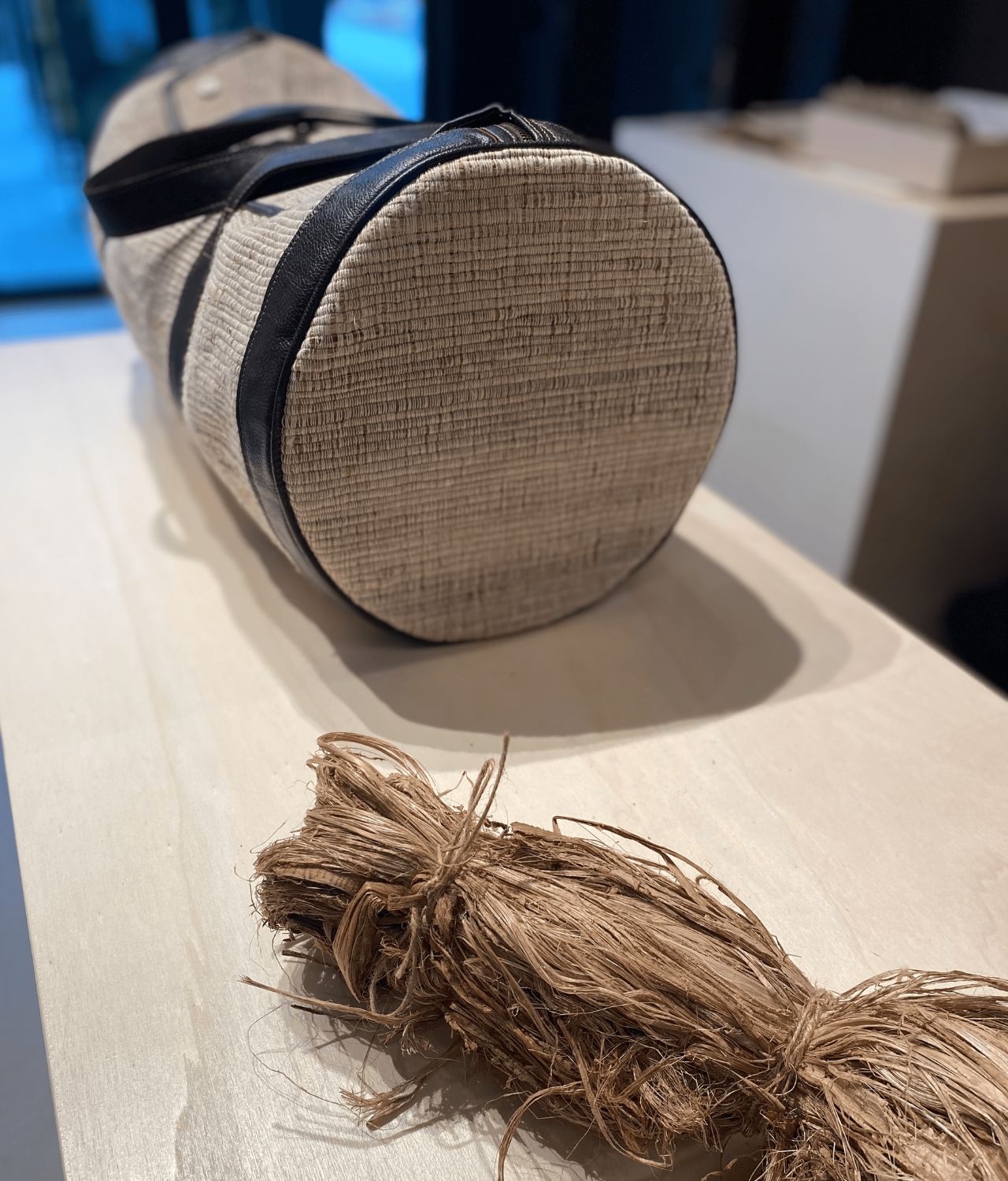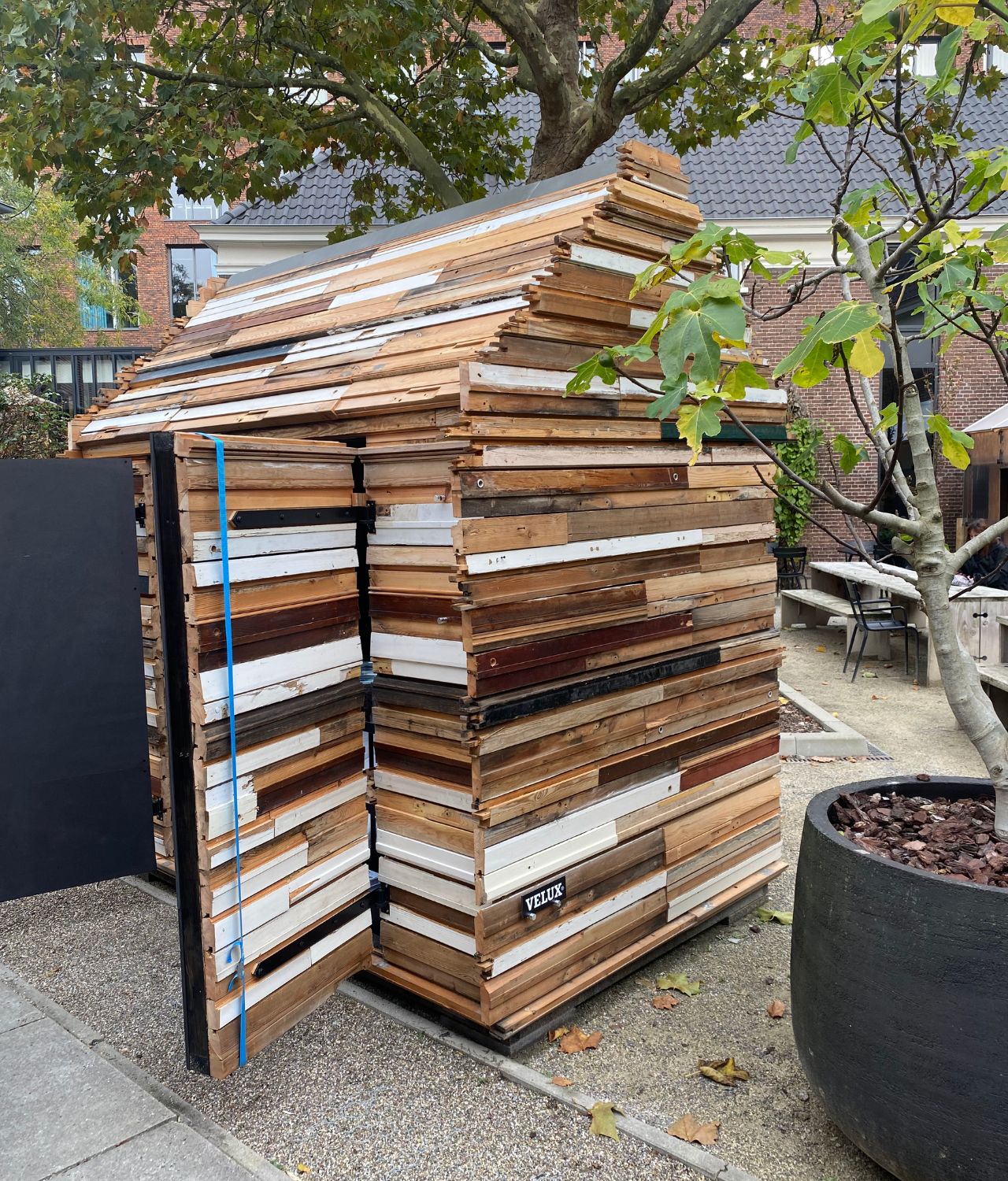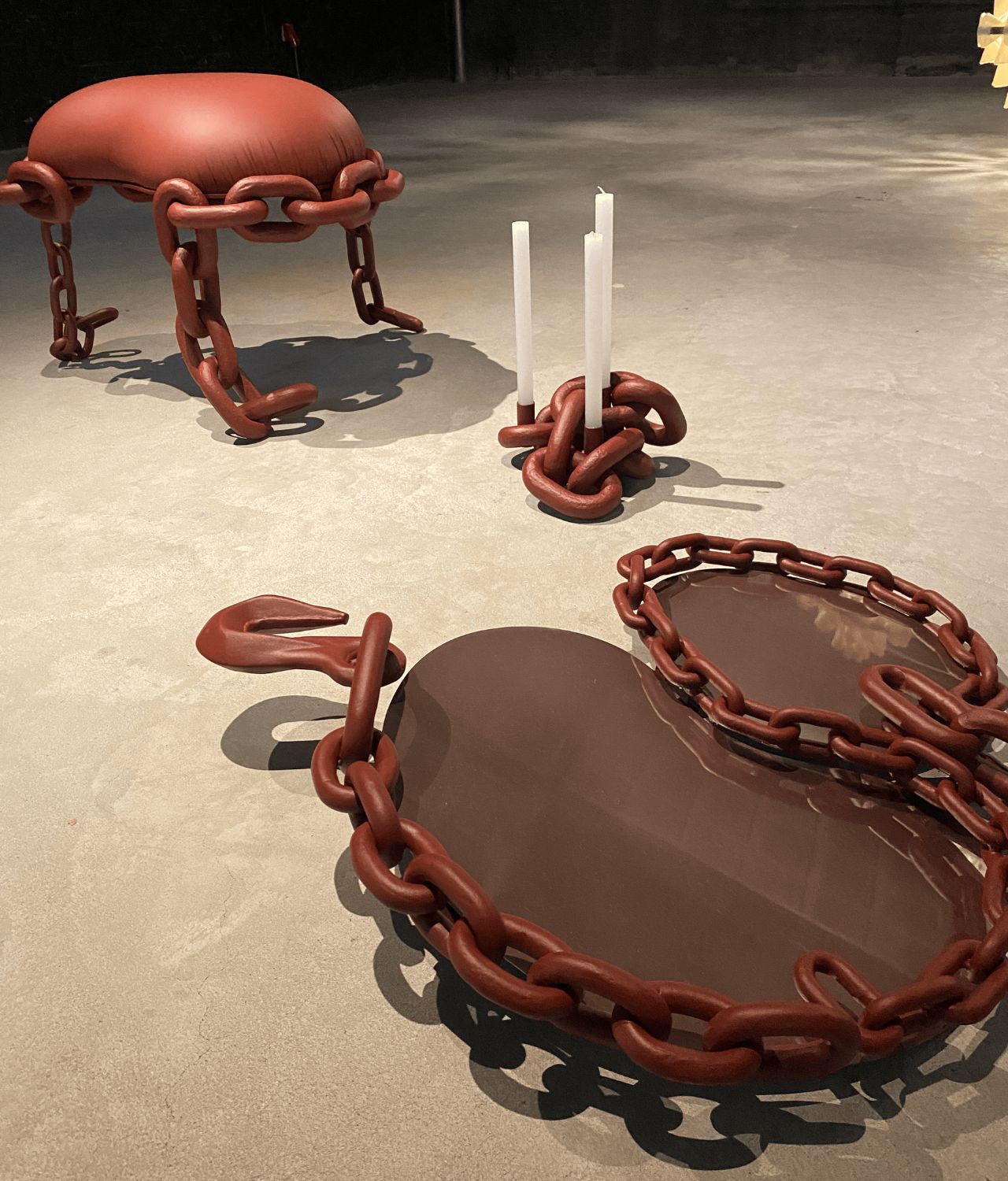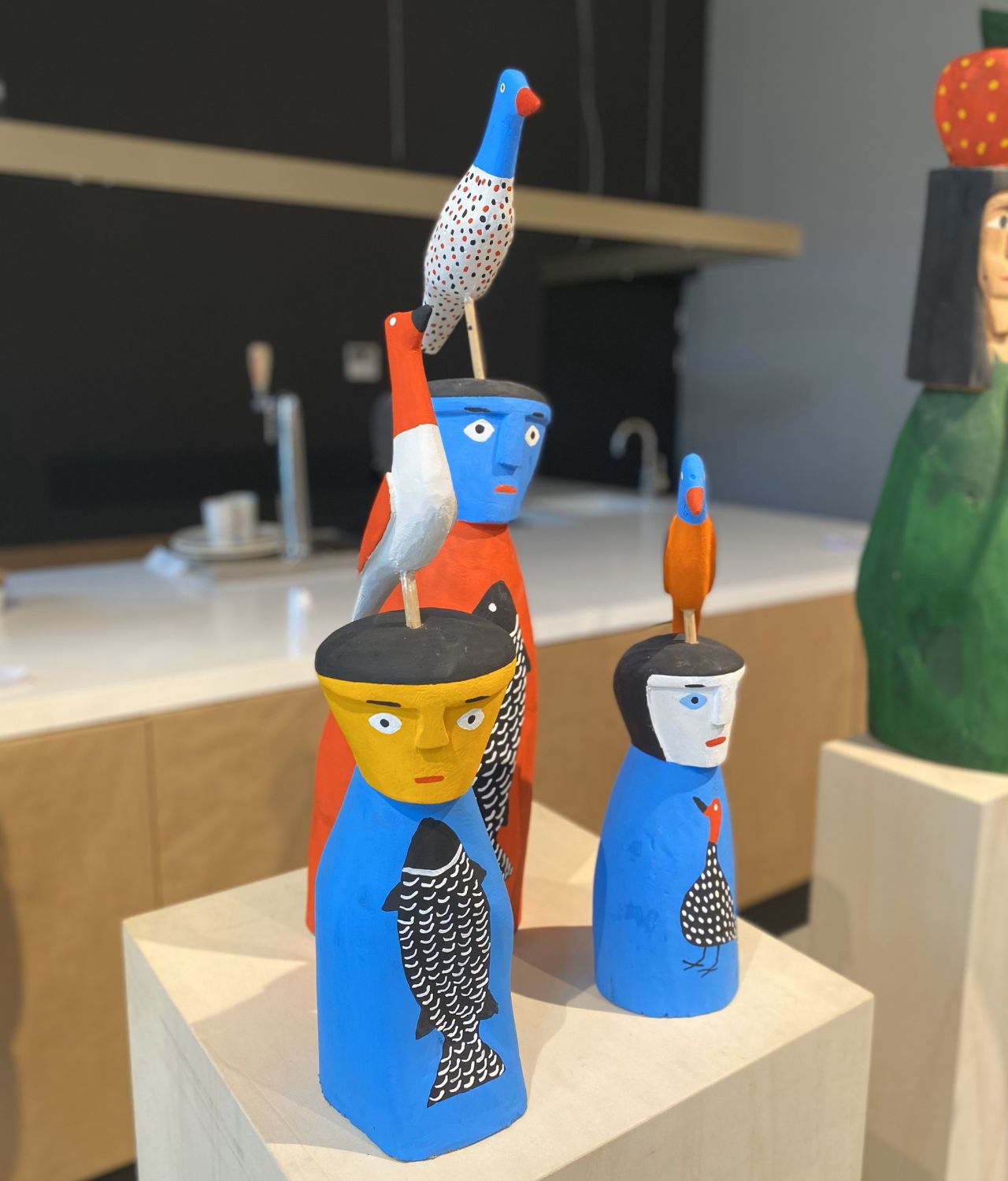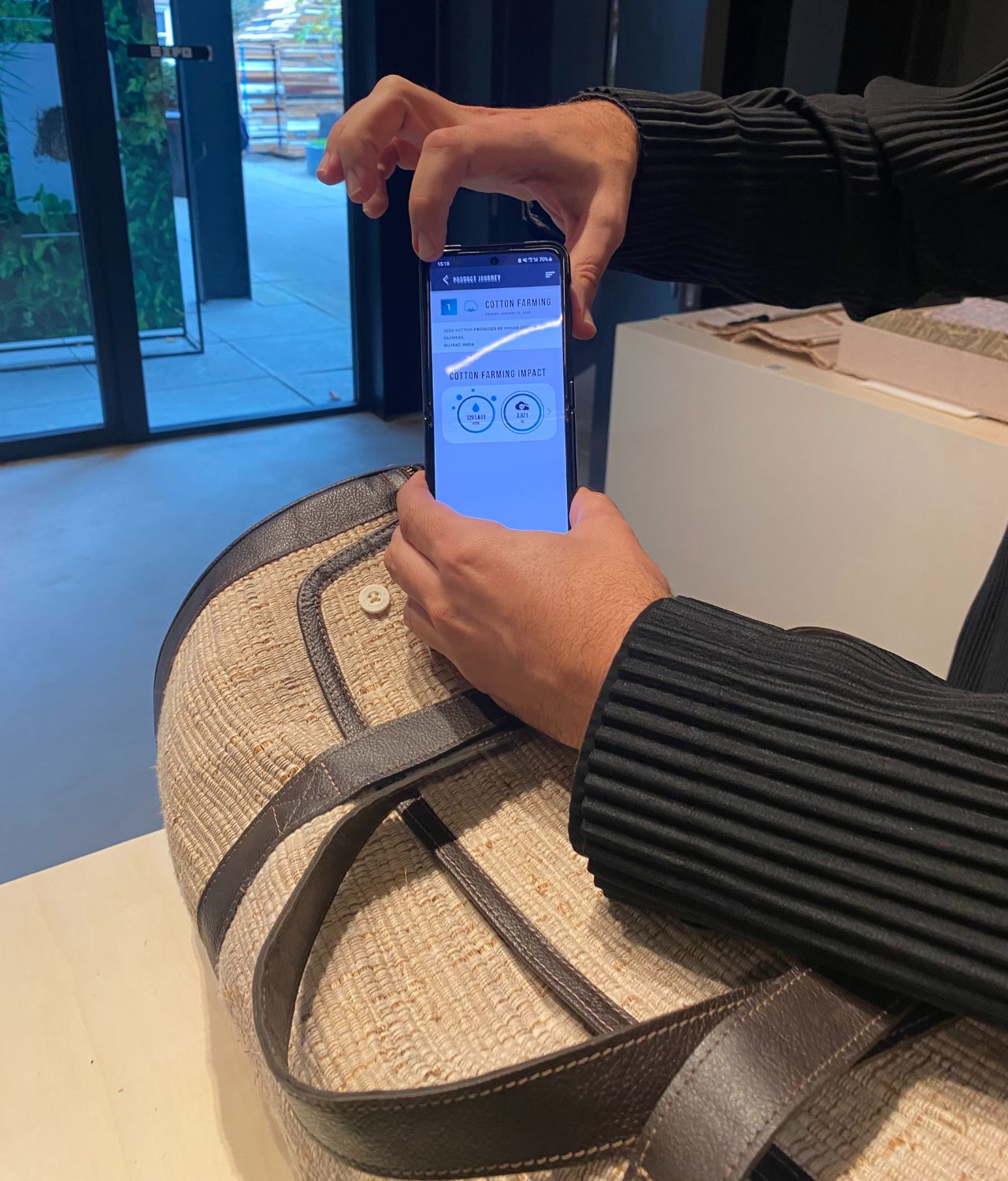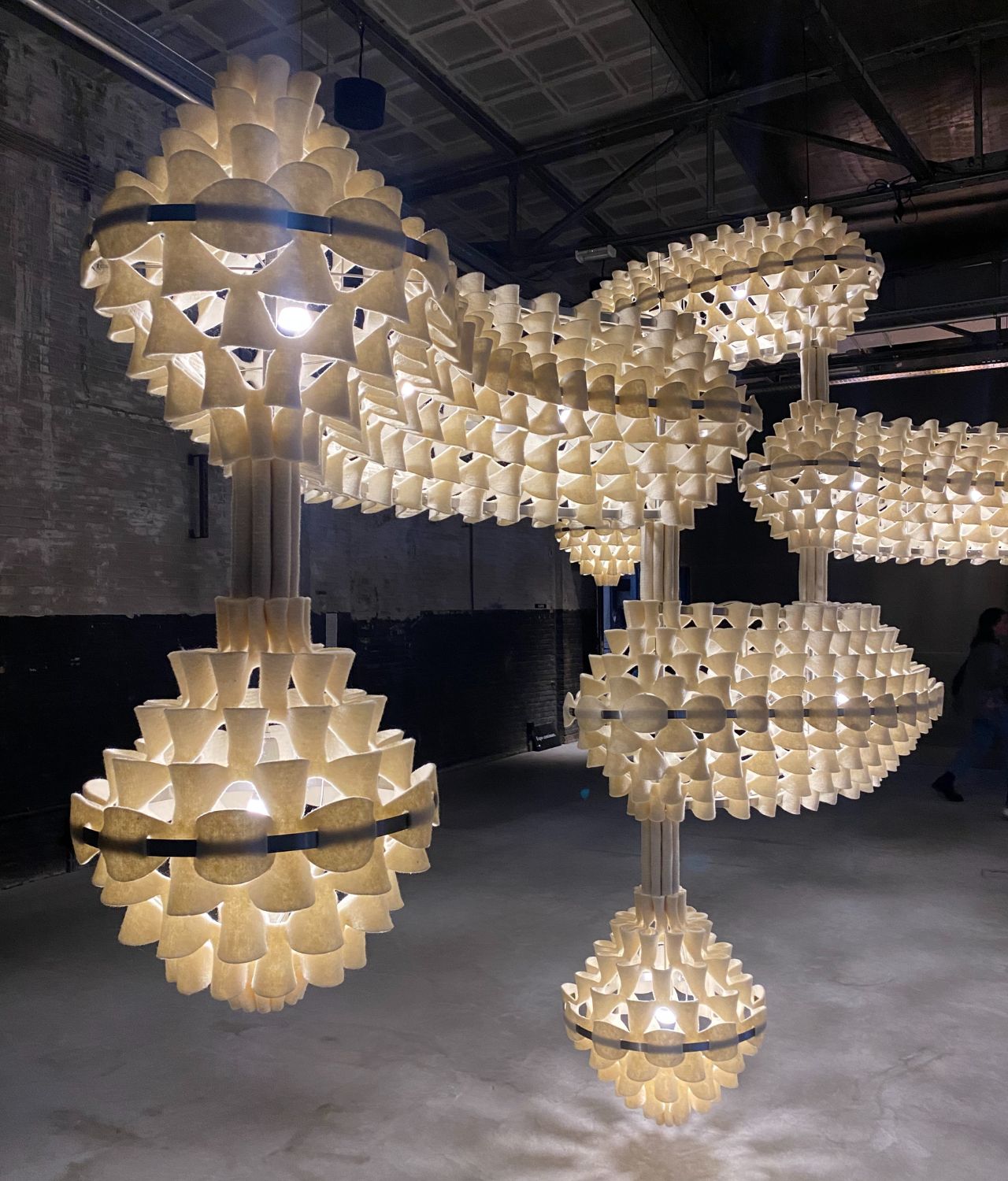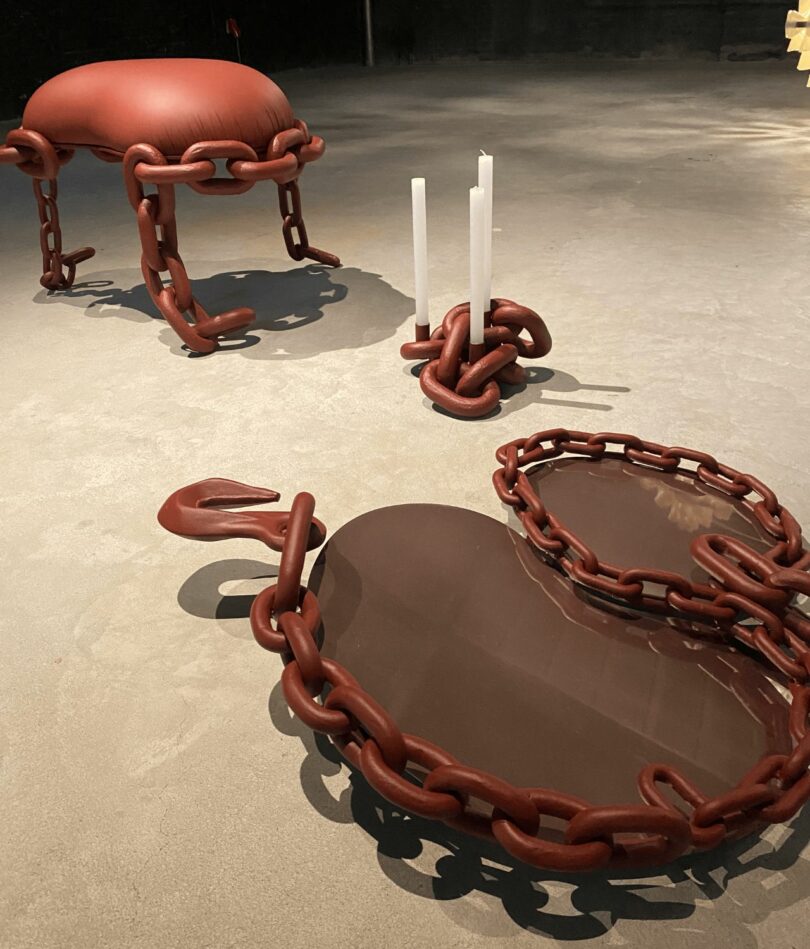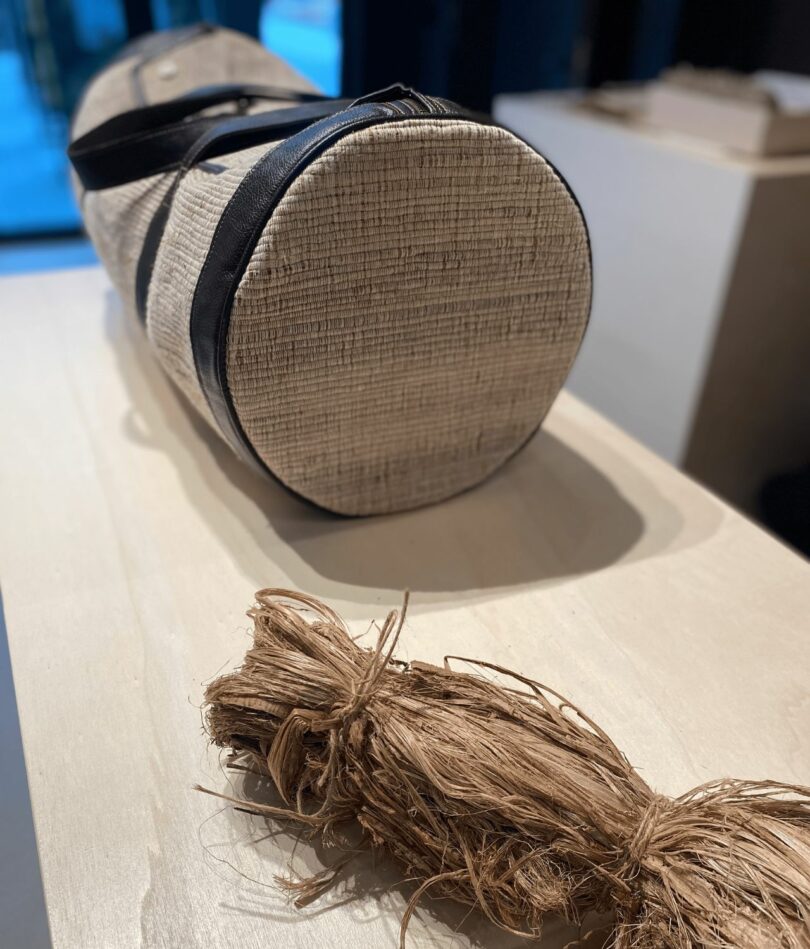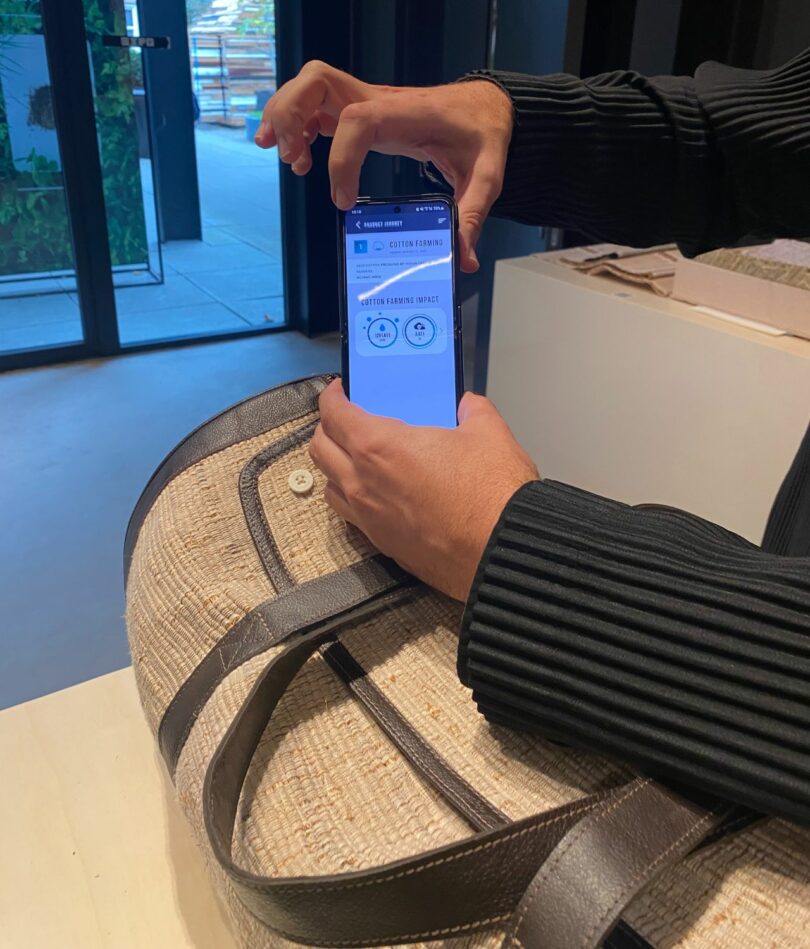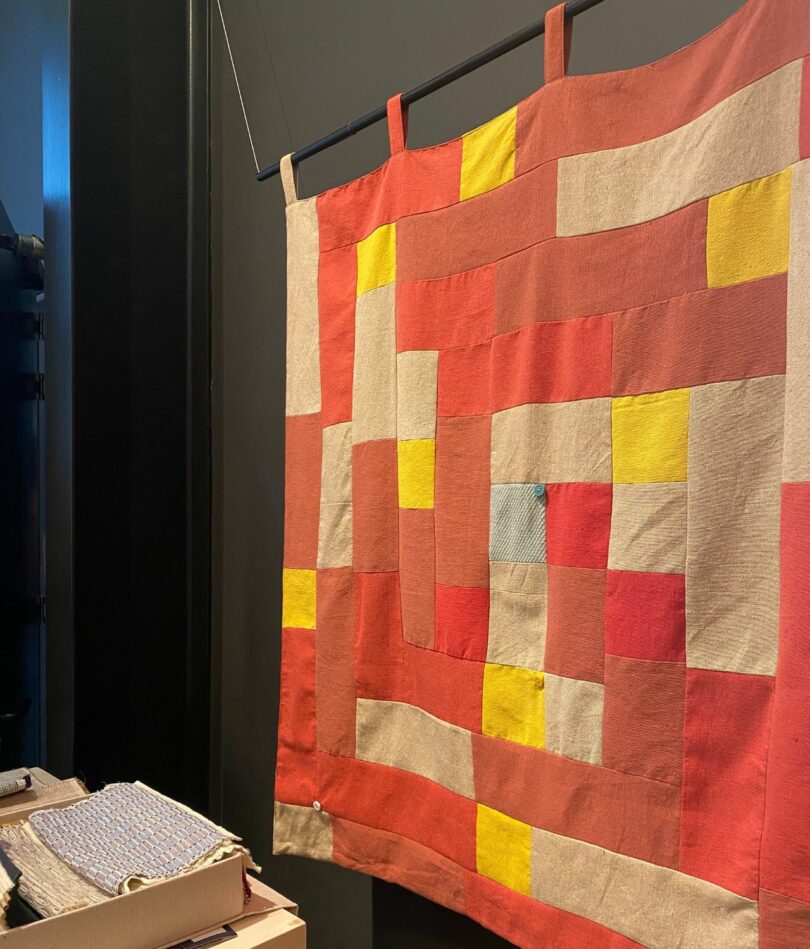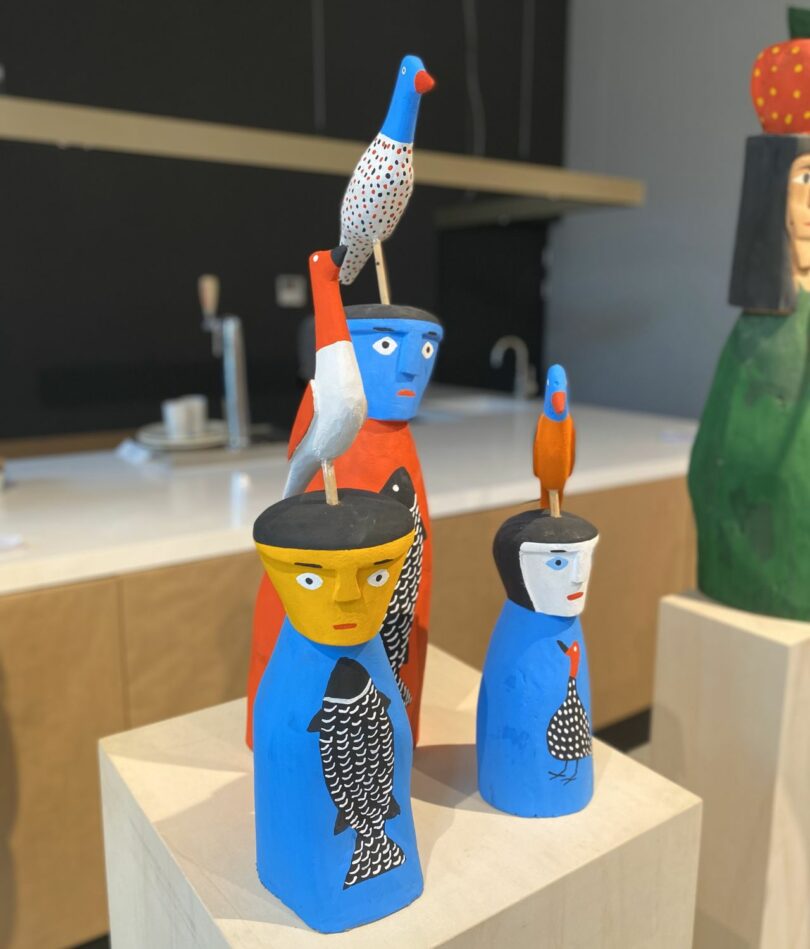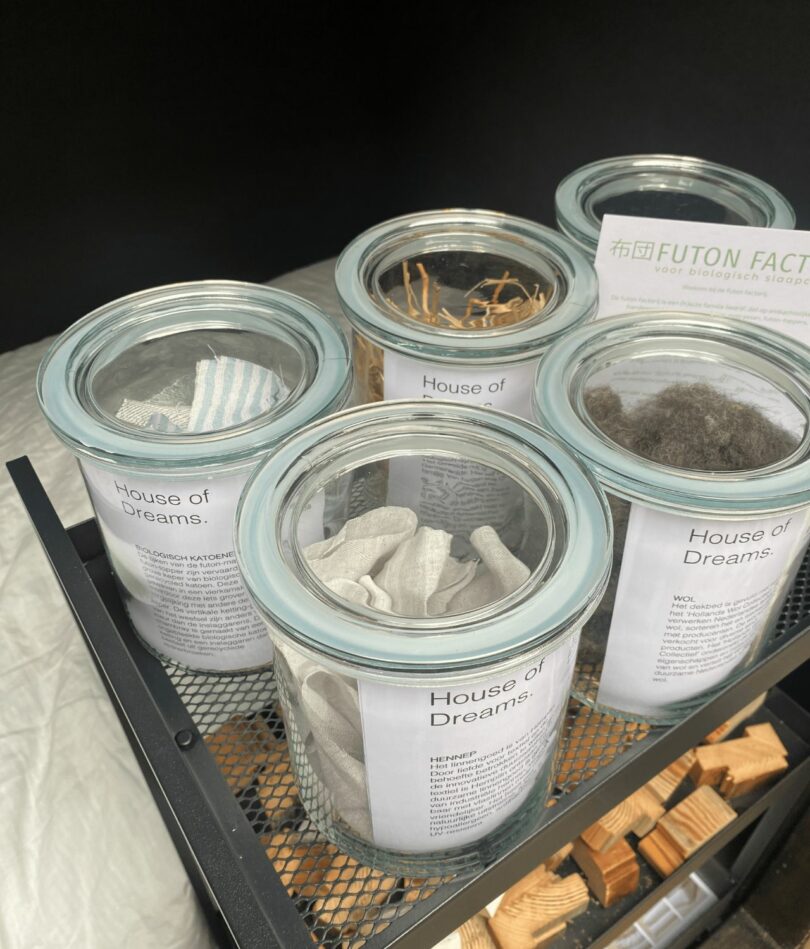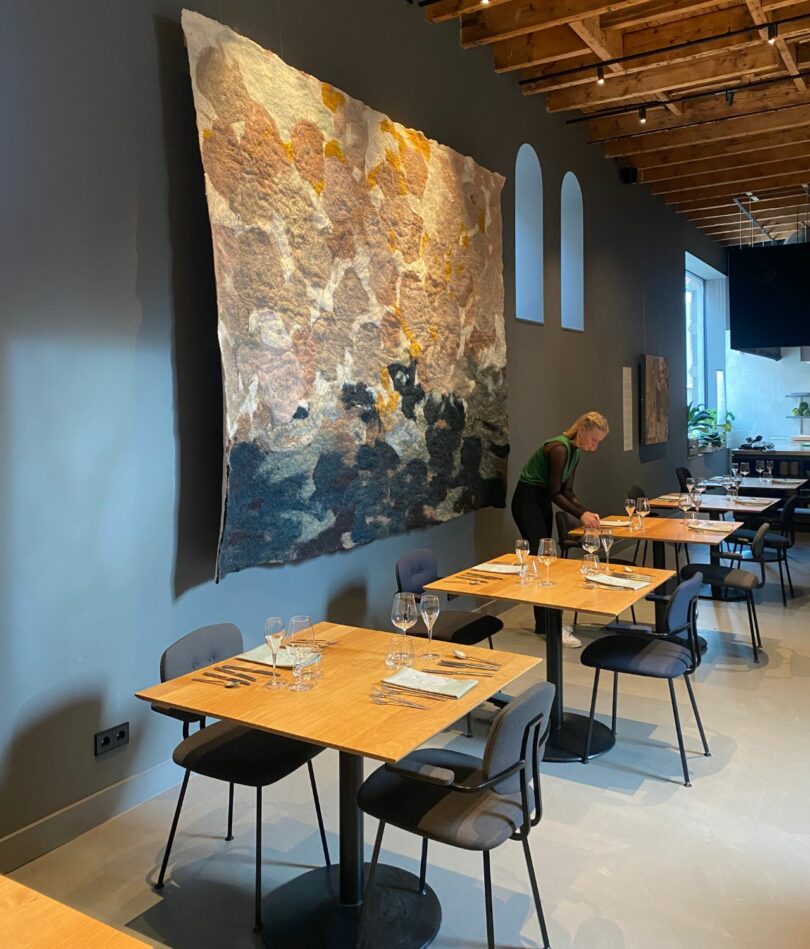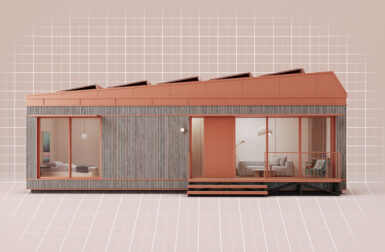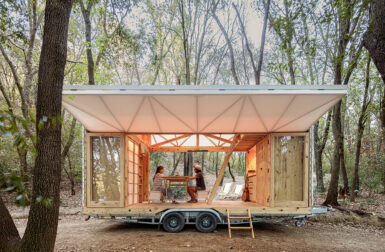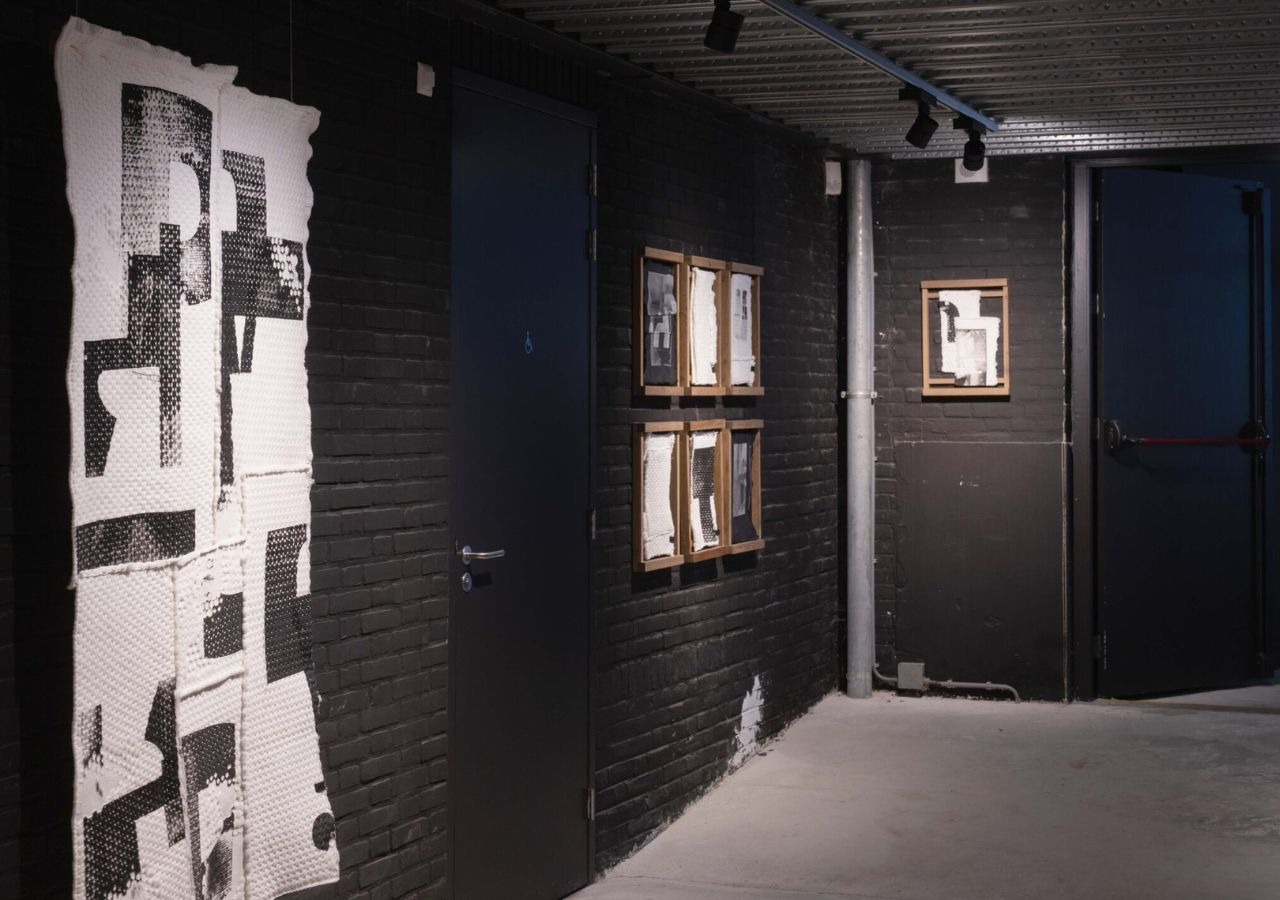
Kazerne is a 2,500-square-meter combined meeting, exhibition, and hospitality space housed in a former military police barracks (and adjoining warehouses) dating back to the early 19th century. When Design Milk last visited in 2015, the renovation was only a year in – now it is complete and diners can eat surrounded by powerful design installations. For Dutch Design Week 2023, a show called Evolving Harmony: Intertwining Hope and Design has been curated by Annemoon Geurts exploring a “radically different” way to “live, produce, and consume together.”
The space adjacent to the main dining area was given over to three large sculptural pieces, two of which were by Eindhoven-based designer Grietje Schepers, who graduated from Design Academy Eindhoven in 2008. Ellipt 007 (above) is made from natural Dutch wool felt – the light and shadows it casts were conceived to create “mesmerizing patterns” and “alter the sensory perception” of the space. The three-dimensional form was created using an intricate pattern cut into flat felt with no waste.
“The Crawling objects capture your attention with their insect-like composure,” said the wall text explaining Crawling (above). “The creatures seem to come towards you while they are obviously too heavy to walk.” In keeping with Schepers’ low-waste approach, they are largely made from thrifted materials and objects.
The third piece is by a more recent DAE graduate, artistic researcher, and designer Ori Orisun Merhav. Made by Insects is part of an ongoing research project into the natural polymer lac (more commonly known as Shellac and used as a coating) which is made from the secretions of female lac bugs. What started with a research project in Thailand to study the insects has evolved into a library of new techniques for working with this material in new and innovative ways and a body of work that demonstrates those techniques.
Fragments N21C and N21H (above and top) by Nanette de Kool are a collage of memories captured in photographs, video stills, and fragments of conversations, that are then screen-printed onto used and reconstructed textiles to evoke your own stories and memories. The Illinois Institute of Art graduate has a background in fashion design and styling.
Selyn was founded in 1991 when Sandra Wanduragala set out to create a sustainable income source for 15 women in Sri Lanka by reviving the dying art of handloom weaving in her home garage. Today it is a fair-trade certified company employing more than 1,000 female artisans across rural Sri Lanka.
As well as traditional crafts, Selyn uses cutting-edge technology to provide transparency into its supply chain. By simply scanning the button attached to the top of this bag, you can see who made it and when they were last paid, verified by the maker herself, as well as information about materials, dyeing methods, and environmental impact.
In September 2022, the company was commissioned by the ambassador to the Kingdom of the Netherlands in Colombia to collaborate with interior architect Nicole van der Velden, to renovate his office and residence in line with his circular economy principles. Alongside reupholstered furniture, this quilt (above) was produced to tell the story of the project through its scanable buttons.
With support from Creative Industries Fund NL, Isaac Monté has 3D-printed three giant clams – representing different stages of a stone mason’s apprenticeship – from Stone Paper made from byproducts from the limestone industry, such as calcium. Due to its unique viscosity, this necessitated the development of novel extrusion techniques. Through his work, Monté pays homage to the ancient craft of stonemasonry while redefining it for the modern era.
Everyday Paradise (above) was co-curated by Lili Tedde and Lidewij Edelkoort to enable visitors to “search for beauty, soothe our soul, and heal our mind; to recompose our battered being” in a climate of “ongoing war, endless waste, accelerated climate change, and our loss of agency to AI.” Edelkoort is quoted as saying “The selection of these exotic masterpieces was done with the expert eye and experience of Lili Tedde, passionate about helping others discover her beloved Brazil through multiple publications and exhibitions,” however, I found the decision to credit everybody involved apart from the designers and makers of these pieces, plus the use of terms such as “exotic” and “outsider,” problematic and perhaps symptomatic of some of the problems the exhibition was designed to soothe if not solve.
House of Dreams explored the bedroom of the future with a “bedstead made of only responsible and locally harvested materials, a safe place to close your eyes, take a nap, refresh your mind, and dream a dream that stays your own.” The project was conceived by ConverseArchitects, made from reused Velux window frames, and filled with a specially made mattress, futon, topper, and pillows containing only materials from Dutch soil made by Futon Factorij.
“Since we want to showcase a simple bedroom, it seemed appropriate to us to exclusively pick real and tangible materials and products,” say the architects. “By staying close to the origin of the products we want to show the simplicity of our basal installation. Our goal is to pick our materials from Dutch soil and work together with real craftsmen.”
Finally, the gourmet circular farm Vaderland hosted a pop-up restaurant for the duration of Dutch Design Week. Designer and farmer’s daughter Lianne van Genugten and chef Joep Brekelmans are building the farm using “an iterative design process, in collaboration with nature” they say. “This means perpetual movement, fine-tuning, balancing, and optimization, again and again. With respect and attention for what the earth asks and gives, they are developing a nature-inclusive farm.”
Photography by Katie Treggiden.
